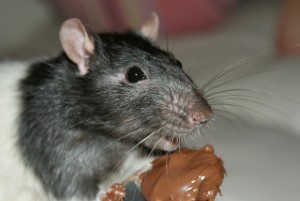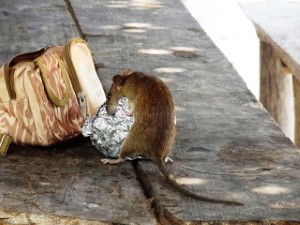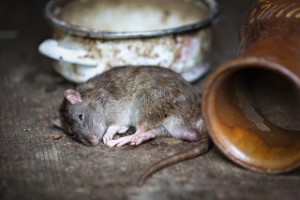RATS
RATS - LONG ISLAND, NEW YORK
Rats are long-tailed, medium-sized rodents originating in Asia but now can be found worldwide. True rats, also known as Old World rats, belong to the genus Rattus. However, other rodent genera with some of the same characteristics are also known as rats. A rat can be distinguished from a mouse by having a large head, blunt muzzle, thick body, and large feet. Norway and roof rats are the most common of the sixty-six species of rats. Identifying what rat species is present is crucial in choosing effective rodent control strategies. The Norway rat, also known as the sewer, brown, common, street, Parisian, Hanover, and wharf rat, is found on every continent except Antarctica. The black rat, also known as the roof, house, and ship rat, has a more limited geographical range than the brown rat, favoring coastal areas and warmer climates. Black rats, brown rats, and house mice are commensal rodents because they depend on humans for life essentials, including water, food, and shelter. Like house mice, rats are nocturnal creatures, although brown rats are frequently active during the day. Back rats are smaller in size than brown rats and are not always black but are darker in color than brown rats. True rats are omnivorous scavengers and are one of humanity's most destructive mammals.

Although brown rats are omnivorous, they prefer a carnivorous diet consisting of snails, insects, bird eggs, poultry, mice, amphibians, and carrion. Rats contaminate animal feed, foodstuffs, property, and structures and are a host for disease and parasites, including fleas, lice, and mites that can be transmitted to humans and other animals. Rats are host to many different zoonotic pathogens. Rat-borne diseases have taken the lives of more people in the past ten centuries than all the casualties of all the wars combined. True rats are invasive species responsible for the disappearance of many wildlife species, including reptiles, small mammals, birds, invertebrates, and plants. Norway rats live in large, hierarchical groups and can breed throughout the year. Brown rats dig burrows that provide them with shelter, food storage, and safe, thermo-regulated nest sites. The burrows of brown rats can undermine building foundations and slabs. Roof rats breed year-round; in urban areas, they nest in the upper levels of buildings.

RATS: SENSES AND INTELLIGENCE
Rats have eyes on the sides of their heads, affording them a wide field of vision. They have poor eyesight but can move their eyes independently, allowing them to avoid avian predators by maintaining binocular vision overhead. Rats have exceptional hearing and a highly developed sense of smell. They can sense all five tastes, allowing them to identify anything that is not of nutritional value. Like squirrels and opossums, rats are equipped with whiskers and possess an acute sense of touch that enables them to formulate a detailed map of their surroundings.
Rats possess cognitive capacities that enable them to solve problems. Rats learn quickly, have exceptional memories, and can be trained to carry out various tasks, from navigating mazes to pressing levers for rewards. The ability to learn and recall information is a key measure of intelligence. Moreover, rats are able to apply past learning to new situations, evidencing an understanding of abstract concepts. Perhaps one of the most impressive demonstrations of the intelligence of rats is their adaptability. Rats can thrive in various environments, from wild to urban settings. The complex social structures of rats are indicative of their intelligence. Rats exist in hierarchies and communicate with multiple vocalizations, some beyond human hearing. Social interaction is crucial for the survival of rats, as it allows for the effective transmission of information, such as the whereabouts of food or the presence of predators.

RAT CONTROL IN NASSAU COUNTY, NEW YORK
Rat Inspection is the initial step in the rat control process. Rat exterminating professionals from Nassau County Nuisance Wildlife Removal Services will inspect your home or business for evidence of rat inhabitation.
SIGNS OF RATS
Rat Nests are ball-shaped structures made of materials such as shredded paper, insulation, cloth, leaves, and twigs.
Rat Tracks are most easily observed in dusty or muddy locations. Rats produce a four-toed front footprint and a five-toed hindprint.
Rat Droppings are usually 1/2 - 3/4 inch long cylindrical pellets that are dark brown or black in color and are generally found near their nest or runway.
Rat Runways are the routes that rats travel between their nests and water and food sources.
Rat Grease Marks result from the oil on their fur rubbing off onto walls or entrance openings.
Rat Gnaw Marks on the corners of doors, cables, and wires.
Rat Urine Stains can be seen with a black light because the proteins and phosphorus in urine glow when exposed to ultraviolet wavelengths.
Rat Burrows are an underground network of tunnels that rats excavate. The tunnel entrances are generally two to four inches in diameter. Rat burrows can be found in various locations, including gardens, near walls, fences, foundations, concrete slabs, under decks, gazebos, sheds, porches, woodpiles, or compost piles.
Rat Sounds, including high-pitched squeaking in the ceilings, walls, or attic at night, may be coming from rats.
Rat Odors are a result of their urine and droppings.
Rat Holes in the walls and damage to carpeting are evidence of a rat infestation.
HOW TO GET RID OF RATS NASSAU COUNTY, NEW YORK
Rat Repellents - A scientific study demonstrated that rats were not repelled by the presence of predator scents when scavenging for food in areas near their burrows.
Rat Trapping & Removal - Numerous types of rat traps are available for rodent control. However, successful rat trapping and removal depend on using the correct traps and bait for the situation. Different species of rats have varied food preferences based on their evolutionary adaptations and habitat. Effective rat trapping is also contingent upon the proper placement of the traps and the correct number of traps.
Rat Exclusion - Upon completing the rat removal process at your Nassau County, Long Island house or place of business, our wildlife exclusion contractor will rodent-proof your premises to keep rats out permanently. Exclusion is the most crucial and long-lasting element of the rat control process.